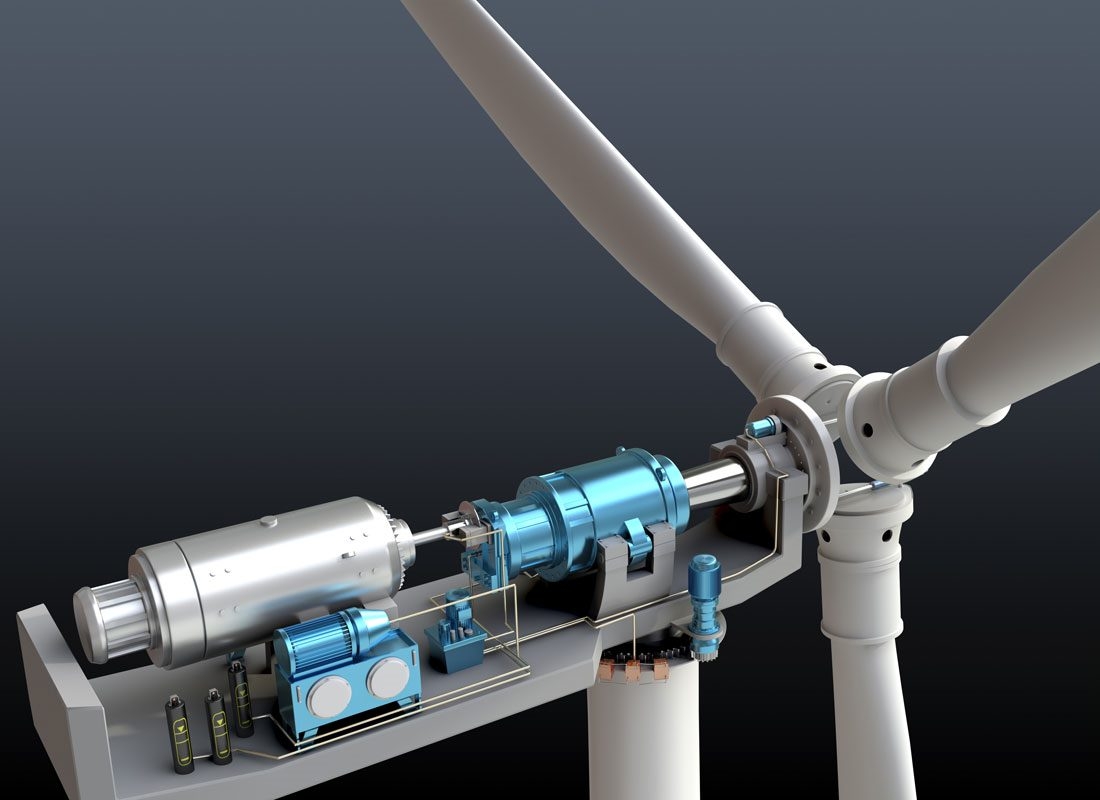Windpower is expected to continue its rapid growth. Onshore wind additions are becoming increasingly popular as costs decrease. Close-to-shore offshore wind is getting significant investment, since turbines can be very large in size and generate more power. Floating offshore wind, a newer technology based on floating platforms from the oil industry, can potentially allow for even larger wind farms further out at sea
Sealing Solutions for Windpower
Seals for wind turbines need to provide low friction, long life, zero leakage and easy installation, with maximized meantime between maintenance being a key requirement. Trelleborg Sealing Solutions contributes to effective operation of hydraulics, our products withstand rigors on land and offshore installations. Seals are designed and tested to withstand continuous short strokes at pressures of 250 bar / 3,625 psi and temperatures as low as -40 °C / -40 °F.

Large diameter rotary seals are needed to effectively seal the main bearing and yaw bearing.
- A split TRJ radial oil seal maintains effective lubrication of the bearing and is supplied with pins for onsite installation.
- The unique, spliced V-Ring® RME is suitable for large applications and is joined onsite after installation. Typically needed in four to six meter diameters, this seal can be manufactured in even larger sizes. An optional metal clamping band can be supplied to support positioning of the V-Ring® on the shaft.Typically, a standard hydraulic cylinder, the lock cylinder locks the rotor and blades in position for maintenance operations. Seals commonly used are:
- Zurcon® U-Cup RU9 rod seal
- Zurcon® Wynseal piston seal
- Orkot® Slydring® prevents metal to metal contact in the cylinder
- Zurcon® Scraper DA22 protects the cylinder by preventing ingress of dirt and debris
Pitch control systems consist of a series of cylinders and control valves, which pitch the rotor to ensure the optimal angle against the wind. These systems can operate as electrical or hydraulic systems. Electric systems require a stable power grid and battery backup.
In hydraulic pitch control systems, quality, reliability and service life are critical. Pitch cylinders operate at a high frequency using short strokes. A typical sealing solution consists of:
- Zurcon® U-Cup RU9 rod seal
- Zurcon® Wynseal piston seal
- Orkot® Slydring® prevents metal to metal contact in the cylinder
- Zurcon® Scraper DA22 protects the cylinder by preventing ingress of dirt and debris
Hydraulic brakes perform different functions on wind turbines. The main brake, often featuring a hydraulic disc brake, assists in bring the rotors to a standstill. The yaw or azimuth brake keeps the nacelle positioned against the wind. These hydraulic powered brakes are equipped with plunger cylinders to hold the tower in position.
Hydraulic brake systems typically use Zurcon® U-Cup RU9. Larger systems incorporate Orkot® Slydring® wear rings and a metal scrapers to protect hardware.
Accumulators, typically piston accumulators, are an important safety feature in wind turbines. They help turn the blade away from the wind in an emergency and also maintain pressure in hydraulic systems when the pump is off, reducing power consumption.
Sealing system for typical accumulator:
Blade bearings sit between the hub and the three wing blades. They are exposed to the environment and offshore and desert climates can cause premature seal failure. Our experts support with seal specification to match the operating environment. Typically used seals include:
- V-Ring® rotary shaft seals
- Large diameter X-Seal to accommodate extreme conditions
- Custom molded X or double V designs provide increased flexibility against eccentricity
At the sandwich mount, between the top of the tower and the turbine, anti-fretting pads facilitate smooth turning of the rotors. Orkot® pads prevent metal-to-metal contact and reduce wear and damage to the surfaces.
Orkot® bearings in floating wind mooring systems protect against metal-to-metal contact and prevent wear on chain stoppers and line handling equipment. Our robust Orkot® material has low friction properties and is virtually maintenance free.
